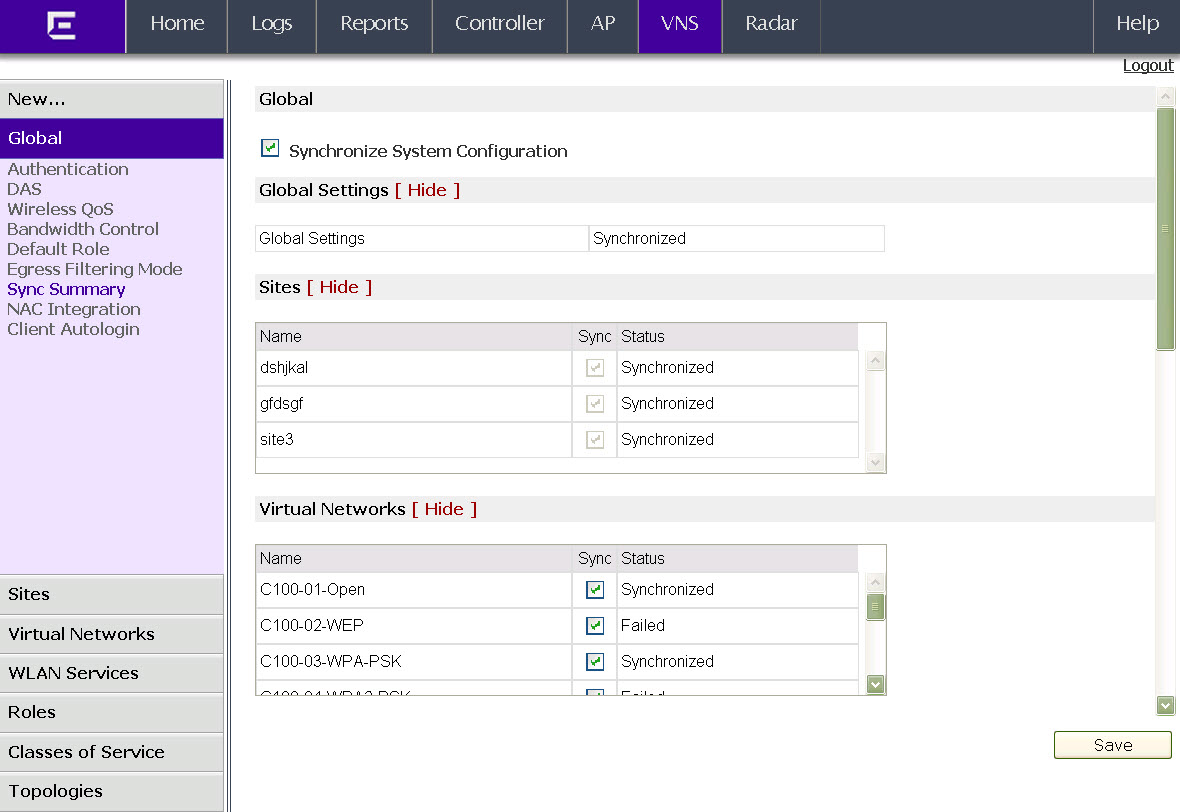The Sync Summary screen provides an overview of the synchronization status of paired controllers.

The screen is divided into five sections: Virtual Networks, WLAN (Wireless Local Area Network) services, Roles, Classes of Service, and Topologies. Each section lists the name of the corresponding configuration object, its synchronization mode, and the status of last synchronization attempt.
If Synchronization of an object is not enabled, then there is a button in the Status field which says “Synchronize Now”, which performs a single synchronization of the object, pushing the object from local controller to the peer.
If Synchronization of an object is enabled, then the “Status” field can have the following values:
The Synchronize System Configuration checkbox acts as a global synchronization flag. When it's disabled, synchronization is not performed in the background. When it is enabled, only the objects that have “Sync” enabled are synchronized.
An object may have a synchronization state of “Conflict” if it was updated on both controllers in the availability pair while the availability link was down. In such a case, the Resolve button lets you choose which version of the object should be taken, local or remote. Please note that controllers don't compare the actual configuration when they declare a conflict — only the fact that the object was updated on both controllers in the availability pair triggers the “Conflict” state.

 Print
this page
Print
this page Email this topic
Email this topic Feedback
Feedback